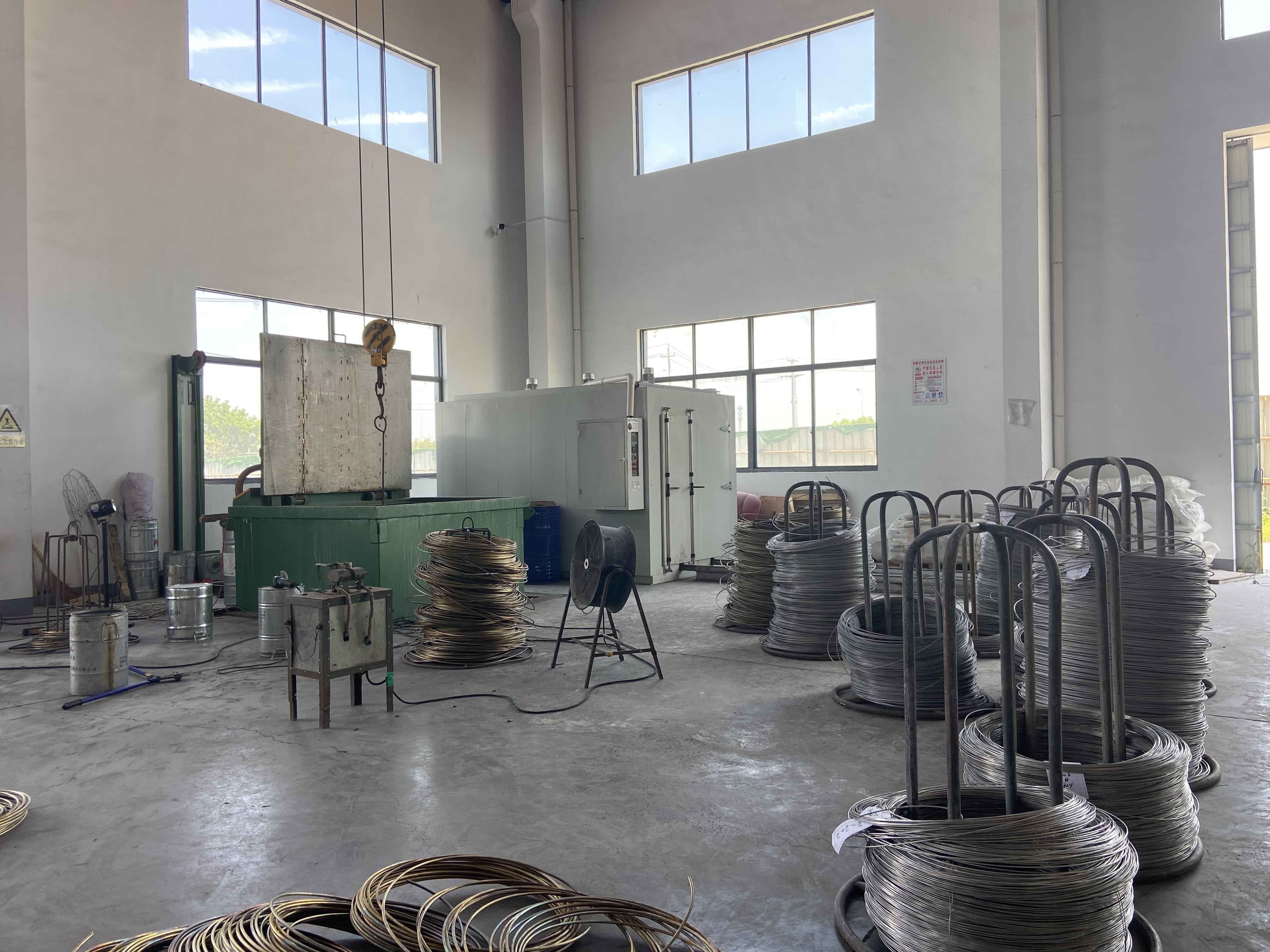NEWS CENTER
Features and Principles of Vacuum Induction Furnace
2022-09-02
With the rapid development of my country in the fields of high-speed rail, nuclear power, petroleum and petrochemical, aerospace and other fields, higher and higher requirements are put forward for steel materials: higher strength, harsher corrosion resistance, high temperature resistance, and stronger fatigue resistance etc., and vacuum induction melting technology is an important guarantee for the production of high-end special steel. Among many special heating or melting methods, induction heating technology is used to smelt and prepare metal materials, and it can accurately control gases, non-metallic inclusions and trace harmful substances in steel. The level of impurities plays a crucial role. This paper introduces the development process of induction furnace and vacuum induction melting technology, as well as the application of induction melting technology in different occasions. According to the structure of different vacuum induction furnace types, compare their advantages and disadvantages. Looking forward to the future development direction of vacuum induction furnace, and expounding its development trend. The development and progress of vacuum induction furnaces are mainly reflected in the gradual improvement of the overall structure of the equipment, the increasingly obvious trend of large-scale equipment, and a more intelligent control system.
When the alternating current passes through the induction coil, an alternating magnetic field is generated around the coil, and the conductive material in the furnace generates an induced potential under the action of the alternating magnetic field, forming a current (eddy current) at a certain depth on the surface of the charge, and the charge is heated and melted by the eddy current. Induction furnace is an electric furnace that uses the induction electrothermal effect of materials to heat or melt materials.
The method of melting and refining superalloys by placing an induction furnace in a vacuum is called vacuum induction melting (VIM) of superalloys. At present, the high-alloyed high-quality superalloys are almost without exception using the vacuum induction melting method as the first melting, and then the second melting, or even the third melting.
Atmospheric smelting was adopted in the 1940s, and the service temperature of superalloys was limited to about 750°C. In the 1950s, vacuum technology was invented, and vacuum smelting was used to improve the quality of superalloys and improve hot working properties, so that alloying elements could be further increased, so that the service temperature of deformed superalloys was increased from about 800°C to 950°C. Later, using vacuum metallurgy technology to develop cast superalloy, under the same composition, the service temperature of cast superalloy is about 30C higher than that of deformed alloy. Since the casting molding eliminates the difficulty of hot working, the content of strengthening elements such as Al, Ti, Nb, Ta can be further increased, and the service temperature can be increased by 20°C. Therefore, vacuum smelting has played a very important role in the development of superalloys.
In the 1920s, industrial vacuum induction furnaces were put into use. Germany used a vacuum induction furnace to melt Co and Ni alloys in 1923, with a capacity of 4t and a power of 350kW. Since then, the vacuum induction furnace has gradually developed.
In 1958, a vacuum induction furnace with a capacity of It was put into production for melting superalloys, and in 1961, a vacuum induction furnace with a capacity of 6t was also put into production. The vacuum induction furnace with a capacity of 60t has been officially used in production in the United States in 1968, and the vacuum degree can reach 1.33xlO-2Pa[1] my country imported two 10kg small vacuum induction furnaces from abroad in 1956, of which the Chinese Academy of Sciences Metal owned one , used for smelting shackle-based casting superalloys, and played a very important role in the research of early superalloys in the Institute of Metals.
On the basis of the introduction of 3/6t vacuum induction furnaces in the 1980s, several domestic special steel mills have been equipped with 12t large vacuum induction furnaces with contemporary world advanced level in recent years. The 12tVIM1400 vacuum induction furnace imported from Germany has an ultimate vacuum degree of 0.01Pa and an air leakage rate of 27Pa·L/S, which can accurately control the chemical composition of the alloy, especially the elements with high affinity for oxygen (such as Al, Ti, B, Zr, Mg), the advanced electromagnetic stirring system can accelerate the melting and the uniformity of temperature and composition, and the purity of molten steel is guaranteed by two layers of slag blocking and ceramic filtration during pouring, and the melting parameter curve can be automatically carried out Process control, on-site data acquisition system can display and automatically record smelting process parameters, such as power, frequency, vacuum, air leakage rate, temperature, etc., to ensure product quality is stable, and to provide long-term, true and complete traceability for products sex.
First, the characteristics of vacuum induction furnace melting superalloy
All the characteristics of high temperature alloy melting in vacuum induction furnace come from the word "vacuum". This method can avoid the disadvantages of alloying elements produced by atmospheric smelting and casting, especially the more active elements that are easy to burn and difficult to control, and the high content of gas, non-metallic inclusions and harmful metal impurities in the alloy, as follows:
1. The metal material is melted, refined, alloyed and poured under vacuum, avoiding pollution caused by interaction with the air, and the smelted superalloy has high purity.
2. Under vacuum conditions, the contact between metal and air is cut off, metal is not easily oxidized, and the chemical composition of superalloy can be precisely controlled, especially the active elements with strong affinity with oxygen and nitrogen such as Al, Ti, B, Zr, Nb , rare earth elements, etc. are strictly controlled within a very narrow range. Al and Ti can be controlled in the range of ±0.12% in vacuum, but can only be controlled in the range of ±0.25% in air. For example, in the vacuum melting of Inconel718 in a 6t induction furnace, the fluctuation range of each active element in the production of 100 furnaces was counted, and it was concluded that the fluctuations of Nb and A1 were almost within the analytical error range. However, every 0.1% increase in Nb content in this alloy can increase the yield strength by about 10MPa, which is difficult to guarantee when smelted under normal pressure. Another example is that the best comprehensive performance of V-57 can only be obtained when Si < 0.2% and C is between 0.04 and 0.08% ±. The range is so strict that it can only be guaranteed by vacuum induction melting.
3. Smelting under vacuum creates good degassing conditions, so that the smelted superalloy has low hydrogen, oxygen and nitrogen gas content.
4. The low melting point harmful impurities brought by the raw materials, such as Te, Pb, Se, Bi, Cu, Sb, As, Sn, etc., due to their high vapor pressure, can be volatilized and removed under vacuum to purify the material. . For example, there is a deformed shackle-based alloy with the composition of 0.2C, 20Co, 5Mo, 1.5Ti, 4.8A1, 0.05Zr, 0.003B, and the change of lead content before and after vacuum melting is reduced from 5ppm to <2ppm (limited by analytical precision) , the performance is greatly improved, the lasting time at 940°C and 110Pa is extended from 72h to 153h, and the elongation is increased from 9.5% to 20%.
In the study of the volatilization of some harmful impurities such as Cr20Ni80 alloy and pure iron, such as god, tin, gui, collar, copper, lead, supplement, selenium, etc., when melted under a vacuum of 5xlO-3nunHg, the volatilization of impurities is related to temperature, time, and temperature. The surface area, depth ratio and agitation of the molten pool are related. The alloy composition of the molten pool also has a great influence. Arsenic and tin hardly change in nickel alloys, but they decrease continuously in pure iron. As for how they will change in Fe-Ni-Cr-based alloy molten pools, it is worth studying.
5. Under vacuum conditions, the deoxidation ability of carbon is very strong, which is improved by several orders of magnitude, and the deoxidation product CO is continuously drawn out of the furnace, so that the reaction is continuously carried out, thereby overcoming the deoxidation products brought by the use of metal deoxidation.
6. The atmosphere and air pressure in the furnace can be optionally controlled. For example, Ar gas protection is sometimes required, so the oxidation burning loss of alloy elements is less and the utilization rate is high. This is one of the most significant features of vacuum induction furnace melting superalloys.
7. Electromagnetic induction stirring makes the melt composition uniform, accelerates the reaction of the melt surface, and shortens the smelting cycle. In terms of product application, vacuum induction melting furnaces are mainly used to produce superalloys, ultra-high strength steels, stainless steels, and other special-purpose alloys required by aerospace, missile, rocket, atomic energy and electronics industries.
Jiangsu Bohang Alloy Technology Co., Ltd.
MAIL: info@bh-alloy.com
ADD.:No. 8, Fenglin Avenue, East Park, Lvcheng Town, Danyang City, Jiangsu Province
Copyright© 2022 Jiangsu Bohang Alloy Technology Co., Ltd. Powered by www.300.cn
This website already supports IPV6 SEO






